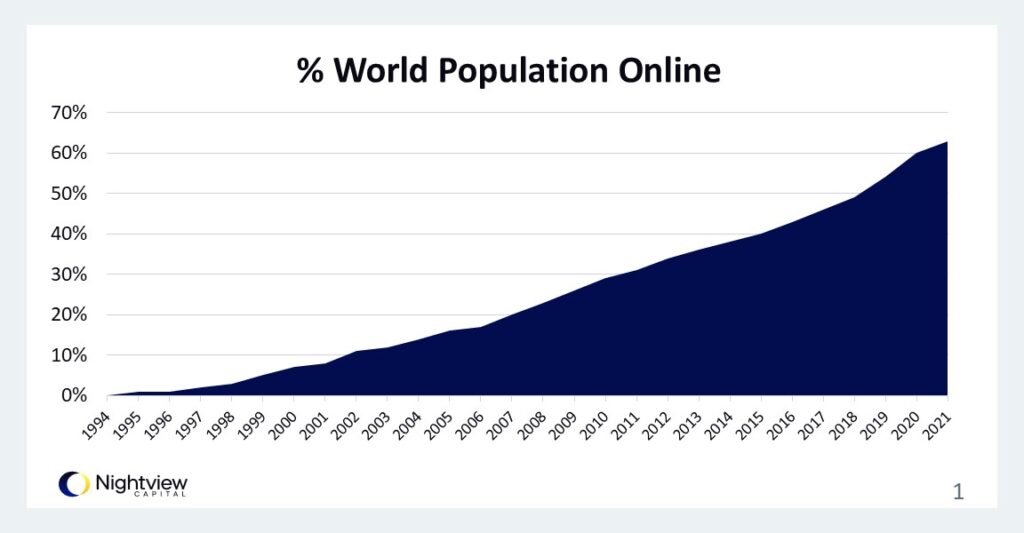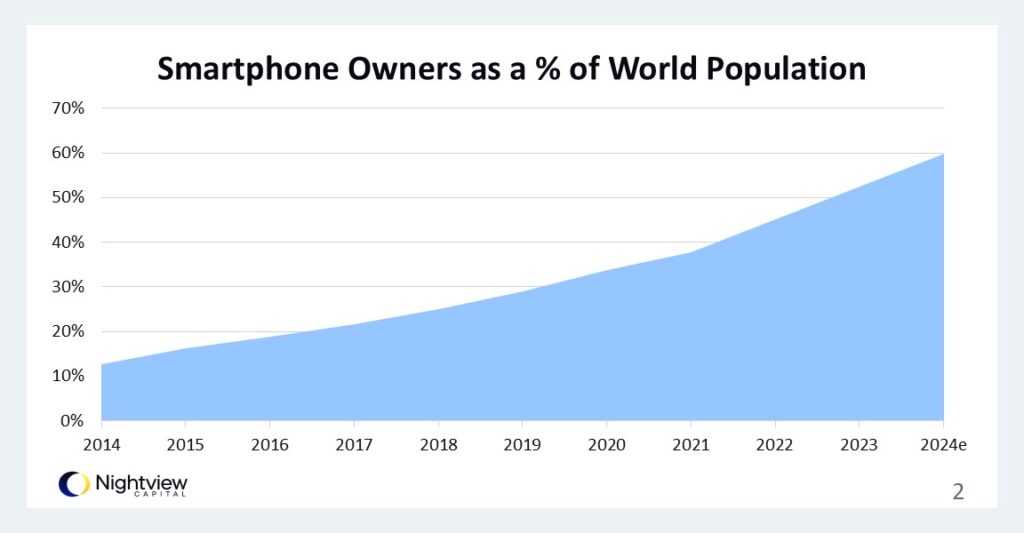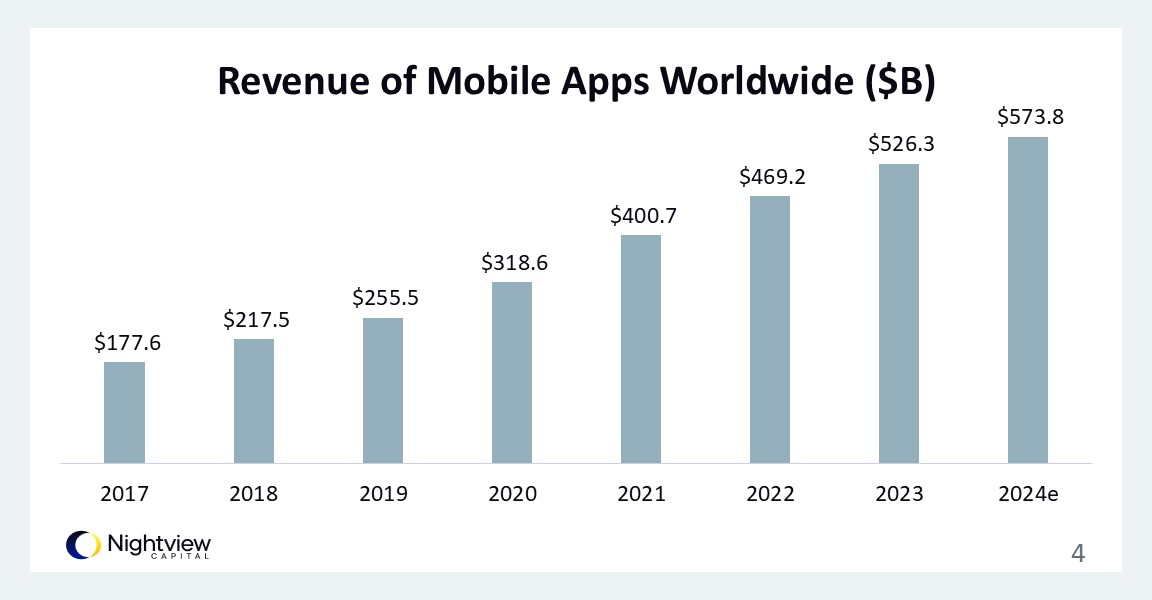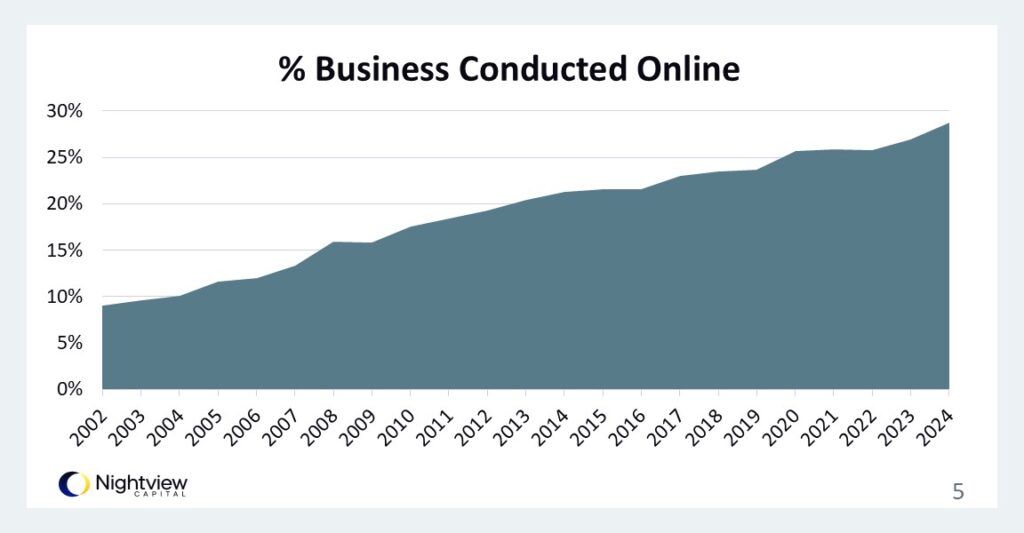
Welcome to Nightpixels, a visual blog about investing, business, and technology.
Nightpixels is published each week by Nightview Capital Research Analyst Cameron Tierney. Follow him here on X and Linkedin.
Sign up to receive weekly Nightview Capital updates below.
Error: Contact form not found.
Since 1991, often considered the birth year of the modern internet, the percentage of the global population that is has access to the Web has skyrocketed from roughly zero to over 60% in 2021. This growth isn’t just a statistical phenomenon; it’s a transformation that has reshaped economies, societies, and individual lives across the globe.
But what has fueled this extraordinary surge in connectivity? The answer lies in the small, powerful devices that have become nearly ubiquitous over the past decade: smartphones.
Over half the world is now online

The first chart reveals that over half of the world is now online, a remarkable leap considering that less than 30 years ago, the internet was a novelty for most people. The trajectory from virtually 0% online population in the early 1990s to over 60% in 2021 illustrates a broad trend of increasing global connectivity. The implications of this growth are profound—ranging from the democratization of information access to significant shifts in how businesses operate and how people interact with the world.
Global smartphone penetration is nearing 60%

The second chart ties this growth directly to smartphone adoption. Since 2014, when only about 12% of the global population owned a smartphone, the number of users has surged to over 50% by 2023, with predictions pointing to nearly 60% by the end of 2024. The correlation between Internet growth and smartphone adoption is not coincidental; smartphones have made the Internet more accessible, portable, and user-friendly, bringing millions of people online who might not otherwise have had access.
People are using their smartphones for more data

As smartphones proliferated, the amount of data consumed on these devices also ballooned, as shown in the third chart. From 2018 to 2023, global monthly data traffic per smartphone grew from about 5 GB to over 17 GB, with expectations to reach 20 GB in 2024. This surge in data usage reflects not just more people using smartphones but also an increase in the complexity and richness of the digital content they are consuming. High-definition video streaming, sophisticated apps, and interactive websites all contribute to this rising data demand, further entrenching the smartphone as the primary gateway to the internet for many users.
Mobile app revenue has exploded

The economic implications of this trend are made clear in the fourth chart, which tracks global mobile app revenue. From $177 billion in 2017, revenue has exploded to $500 billion in 2023. This massive growth underscores the economic value being generated by the intersection of smartphones and the internet. Mobile apps have become essential tools for communication, entertainment, productivity, and commerce, reflecting a shift in consumer behavior towards mobile-first experiences. This shift is not just a trend; it is a fundamental reorganization of how economic activity is conducted.
Nearly 30% of all business is now conducted via the Internet

Finally, the fifth chart zooms out to show the broader economic impact: the percentage of global business conducted online. Since 2002, when about 7% of global business was online, this figure has climbed to nearly 30% today. This growth underscores the profound impact of digital transformation across industries. As more businesses move online, driven in part by the rise of smartphones, the Internet’s role in the global economy will only continue to expand.
Wrap-up
The story these five charts tell is one of profound change, driven by the widespread adoption of smartphones. These devices have not only brought millions (possibly billions) of people online but have also transformed the Internet into a critical platform for global economic activity.
As smartphone adoption continues to rise and data consumption increases, we can expect the Internet to become even more integral to our daily lives and the global economy. The growth of online business—from a mere 7% in 2002 to nearly 30% today—illustrates just how far we’ve come.
Yet, there is still significant room for growth. As technology advances and more people come online, the economic opportunities will continue to expand, making this a pivotal area for investment and innovation in the years to come.